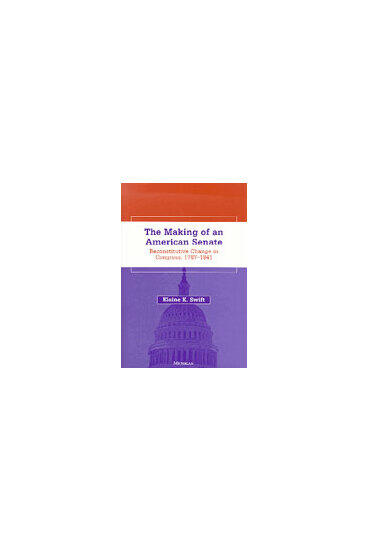The Making of an American Senate
Reconstitutive Change in Congress, 1787-1841
How institutional change occurred in the early American Senate
Description
At the Constitutional Convention in 1787, the framers created a Senate that was nothing short of an American House of Lords. Until the early 1800s, it remained the insulated, legislatively reactive, and executive-friendly upper chamber the Framers intended. By 1841, however, it had become the distinctly American Senate we recognize today: popularly oriented, legislatively proactive, and often independent of executive influence. The Making of an American Senate uses this story to explain how Congress is at times capable of dramatic and enduring institutional change.
To explain this upheaval that reshaped every major aspect of the Senate, the author introduces the concept of reconstitutive change, a theory based on the "garbage can" model of organization choice. Reconstitution, she argues, is produced by the confluence of two streams, the first creating pressures and opportunities, and the second supplying direction and mobilizing support. The first stream is composed of major changes in national political parties, the national electorate, and the national governmental agenda. The second is composed of institutional vision, or prevailing beliefs about what governmental role the institution should play, and institutional catalysts, or members of Congress who bring about change.
This book will engage political scientists concerned with Congressional history, institutional change, and the founding of new institutions. It will also interest historians of the Founding Era and the early American Republic.
"Elaine Swift has plumbed and assembled a rich variety of source materials to trace the early 'reconstitution' of the U.S. Senate from the anglophilic House of Lords into a recognizably American governing institution. The result is a detailed, thoughtful, and persuasive explanation of a major institutional change. It is, equally, a shining example--substantive and theoretical--of the relevance of political history for the pursuit of political science." --Richard F. Fenno, University of Rochester
"This is a fascinating work on a long-neglected subject--the shaping of the U.S. Senate during its early decades." --David Mayhew, Yale University
Elaine K. Swift is Associate Professor of Government, Eastern Washington University.
Elaine K. Swift is Associate Professor of Government, Eastern Washington University.

